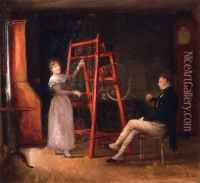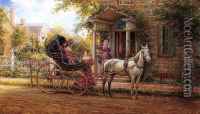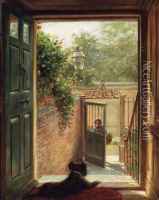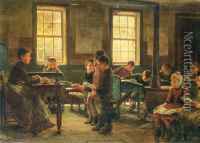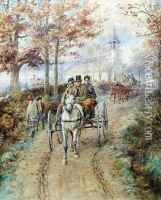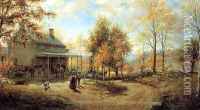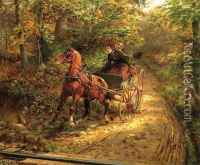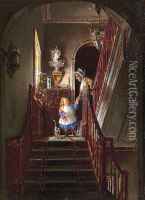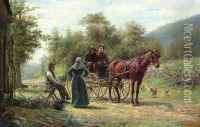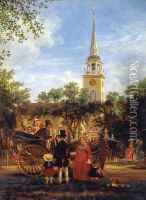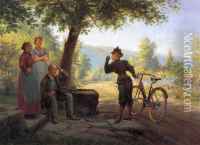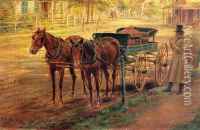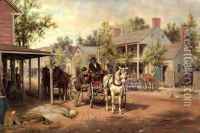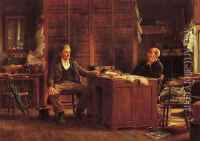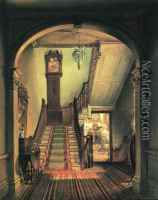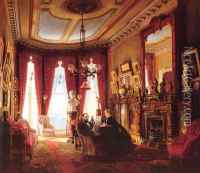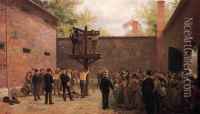Edward Lamson Henry Paintings
Edward Lamson Henry, commonly known as E.L. Henry, was an American genre painter, born on January 12, 1841, in Charleston, South Carolina. He was particularly known for his detailed and nostalgic paintings of American life and historical settings in the late 19th and early 20th centuries. Henry's interest in art began at an early age, and he was determined to pursue his passion despite the early death of his parents. He was raised by relatives in New York and later attended the Pennsylvania Academy of the Fine Arts in Philadelphia. Following this, Henry traveled to Paris to study under the prominent French academic painters Charles Gleyre and Gustave Courbet.
During the Civil War, Henry returned to the United States and served in the Union Army. After the war, he settled in New York and became associated with the National Academy of Design. Throughout his career, Henry was recognized for his attention to historical accuracy in his depictions of earlier American life, often conducting extensive research to ensure the authenticity of the settings, costumes, and details in his work.
Henry's paintings often portrayed the simplicity and perceived moral clarity of past eras, which resonated with audiences during the rapid industrialization and modernization of America. His works were characterized by their fine detail, clear colors, and quaint subject matter. He was particularly adept at capturing the essence of colonial and early American architecture, transportation, and society. Some of his notable works include 'Early Locomotive,' 'The Old Stage Coach,' and 'The Nine O'Clock Mail.'
E.L. Henry was a member of several prestigious art organizations, including the National Academy of Design and the American Watercolor Society. His commitment to historical themes did not wane with age, and he continued to produce artworks well into his later years. Henry passed away on May 9, 1919, in Ellenville, New York, leaving behind a legacy as a painter who meticulously documented American life and culture through his historical genre scenes.
